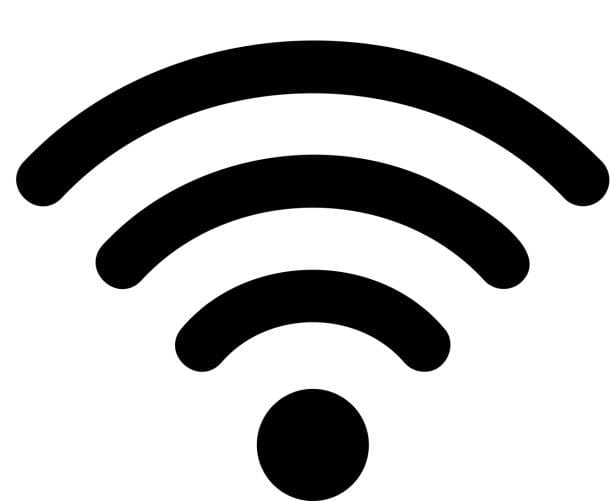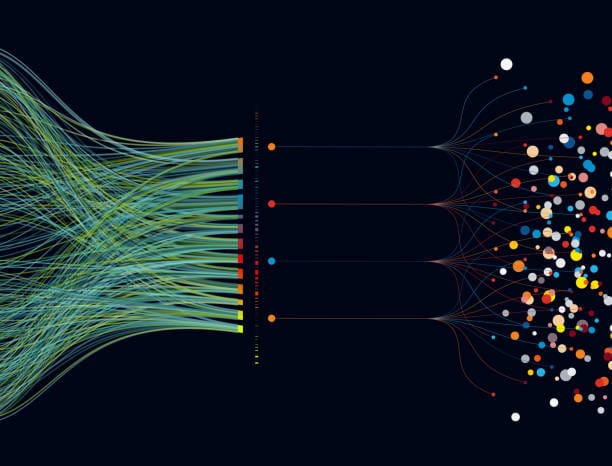If you close your eyes for a moment and imagine your life without Wi-Fi, it feels like stepping back into a dimly lit past. No instant messages across oceans. No streaming videos on lazy evenings. No cloud storage that lets you carry the contents of your life without a physical drive in your pocket. The modern world hums with invisible threads of data, and Wi-Fi is one of the most vital of these — a silent partner in our daily routines, a bridge between the tangible devices in our hands and the vast, intangible expanse of the internet.
But Wi-Fi is more than a technical feature in our gadgets. It is a story of invention, persistence, and the human desire to communicate without boundaries. It is a technology born from radio waves, nurtured in the laboratories of curious engineers, and unleashed into our homes, offices, cafes, airports, and schools. To understand Wi-Fi is to understand not just how our devices talk to each other, but how humanity itself has learned to dissolve the limits of space in the pursuit of connection.
The Origins in the Ether
The roots of Wi-Fi reach back to the earliest days of wireless communication. Long before anyone thought about checking emails on a phone, the air was already a highway for signals. In the late 19th century, pioneers like Heinrich Hertz and Guglielmo Marconi proved that electromagnetic waves could carry messages through empty space. Hertz’s experiments in the 1880s confirmed that radio waves were real; Marconi’s work in the early 1900s showed that they could be harnessed for communication over great distances.
These early transmissions were crude compared to modern standards. They carried dots and dashes in Morse code, not high-definition video streams. Yet they lit the spark for everything that followed. Over the decades, engineers learned to modulate these waves — to imprint them with more complex information — leading to AM and FM radio, television broadcasting, and eventually, the idea that data, too, could ride on these invisible currents.
Wi-Fi as we know it has its lineage in this evolution, but it is also the child of a very specific need: a way to connect computers to networks without the tangle of physical cables.
The Need for Wireless Local Networking
By the 1980s, personal computers were becoming a fixture in offices and homes. But networking them was still a slow, physical affair. Ethernet cables snaked across desks and walls, connecting machines in a fixed arrangement. This worked well enough in static environments, but it lacked the flexibility people were beginning to crave. Businesses wanted conference rooms where laptops could be moved freely without unplugging and reconnecting. Schools wanted to bring computers into classrooms without drilling holes for wiring.
The idea of a wireless local area network — a WLAN — was tantalizing. But it posed enormous challenges. Radio waves don’t care about office floor plans; they bounce off walls, interfere with each other, and weaken over distance. To make a wireless network practical, engineers needed to invent new ways to encode data, deal with interference, and share frequencies with other devices without collapsing into chaos.
The first attempts were clunky. Early systems in the 1980s offered slow speeds and required bulky hardware. Yet the seed had been planted. In the years that followed, researchers would refine the technology, gradually turning it from a laboratory curiosity into the backbone of modern connectivity.
The Birth of IEEE 802.11
The real turning point came in the early 1990s, when the Institute of Electrical and Electronics Engineers (IEEE) began working on a standard for wireless networking. Standards are the secret glue of modern technology. Without them, devices from different manufacturers wouldn’t speak the same language, and the dream of universal connectivity would remain just that — a dream.
The IEEE working group designated the project 802.11, a number that would eventually become synonymous with Wi-Fi itself. Their goal was clear but ambitious: define a set of protocols that would allow wireless devices to communicate reliably over short distances at reasonable speeds.
The first version of the standard, approved in 1997, offered a blistering (for the time) 2 megabits per second. It wasn’t enough to stream video, but it was enough for basic file transfers and email. More importantly, it provided a foundation for improvement.
From Standard to Household Word
Wi-Fi’s leap from an engineer’s term sheet to a household word happened thanks to both technology and marketing. In 1999, a group of companies formed the Wi-Fi Alliance, a nonprofit trade association tasked with promoting the technology and ensuring interoperability between devices. They coined the term “Wi-Fi,” a catchy, consumer-friendly phrase deliberately reminiscent of “Hi-Fi” (high fidelity audio). Contrary to popular myth, it does not stand for “Wireless Fidelity.” It’s simply a brand name — one that worked brilliantly.
That same year saw the release of the 802.11b standard, which boosted speeds to 11 megabits per second and operated in the unlicensed 2.4 GHz frequency band. Suddenly, Wi-Fi could handle web browsing, music streaming, and small-scale video. Coffee shops began installing hotspots. Laptop manufacturers started offering built-in Wi-Fi cards. The cord was being cut, and people loved the freedom.
The Science of Invisible Threads
At its heart, Wi-Fi is a form of radio communication. Your router is a kind of miniature radio station, broadcasting data as electromagnetic waves. These waves are modulated — shaped — so that they can carry the binary ones and zeros that make up digital information.
When you click on a link, your device sends a request over the air to your router. The router translates that request into signals that travel over your internet connection to a distant server. The server responds, and the data makes the reverse journey, arriving back at your device as another set of modulated radio waves. All of this happens in milliseconds, so seamlessly that we rarely think about the complexity involved.
The genius of Wi-Fi lies in how it deals with the chaos of the airwaves. In your home alone, there may be dozens of competing signals — from microwaves, Bluetooth devices, cordless phones, even your neighbor’s Wi-Fi. The protocols built into the 802.11 standard allow devices to take turns speaking, to avoid collisions, and to retry when packets of data are lost.
The Evolution of Speed and Reach
Over the years, new versions of Wi-Fi have dramatically increased speed and reliability. The alphabet soup of standards — 802.11a, g, n, ac, ax — each represents leaps in how much data can be sent and how efficiently the spectrum can be used. Where early Wi-Fi struggled to push a few megabits, modern systems can deliver gigabit speeds, rivaling wired connections.
Part of this evolution comes from better use of the frequency spectrum. While early Wi-Fi relied solely on 2.4 GHz, later versions tapped into the less crowded 5 GHz band, and now even 6 GHz with Wi-Fi 6E. Higher frequencies can carry more data but don’t travel as far or penetrate walls as well, so modern routers often use a mix, steering devices to the best band for their needs.
Multiple antenna systems, known as MIMO (Multiple Input, Multiple Output), have further boosted capacity by allowing multiple data streams to be sent and received simultaneously. Beamforming technology focuses signals toward specific devices rather than broadcasting equally in all directions, improving both speed and range.
Wi-Fi and the Changing Shape of Society
Technologies don’t just change our tools; they change us. Wi-Fi has transformed where and how we work, learn, and socialize. Remote work, once a rare arrangement, has become a viable option for millions, thanks to the ability to connect from anywhere with a decent signal. Students can attend classes from their bedrooms. Doctors can consult with patients in rural areas without requiring long travel.
Cafes have become unofficial offices. Airports, libraries, and public parks have turned into hubs of digital activity. For travelers, Wi-Fi is often more important than hot water. The phrase “What’s the Wi-Fi password?” has replaced “Do you have a phone I can use?” as the first question upon arrival.
Yet this omnipresence comes with costs. We are tethered to our devices in ways that can blur the boundaries between work and rest. The expectation of constant connectivity can create pressure and burnout. The same invisible waves that bring us closer can also make it harder to step away.
Security in the Air
Because Wi-Fi is a shared medium, security is a constant concern. In the early days, networks were often left open, allowing anyone within range to connect. This was convenient but dangerous. Data sent over an open network could be intercepted easily, and unauthorized users could consume bandwidth or even engage in illegal activities under someone else’s IP address.
The introduction of encryption protocols — first WEP (Wired Equivalent Privacy), later WPA (Wi-Fi Protected Access) and WPA2, and now WPA3 — has made it far harder for intruders to eavesdrop or gain access without permission. Still, securing a network requires awareness and care. Weak passwords, outdated firmware, and poorly configured devices remain vulnerabilities.
The Future in the Air
Wi-Fi continues to evolve. The newest generation, Wi-Fi 6 and 6E, is designed for the dense, device-packed environments of modern homes and cities. They offer higher speeds, lower latency, and better performance when many devices are connected simultaneously. Looking ahead, Wi-Fi 7 promises to push throughput even further, enabling applications we can barely imagine today — from ultra-high-definition virtual reality to real-time holographic communication.
Meanwhile, integration with other wireless technologies like 5G cellular networks may blur the lines between local and wide-area connectivity. Your device might switch seamlessly between Wi-Fi and mobile data, choosing the best option without you even noticing.
More Than Just Technology
In the end, Wi-Fi is not merely a technical marvel; it is a cultural one. It has reshaped our expectations about information, communication, and presence. We take for granted that we can watch a live event happening thousands of miles away, that we can see the face of a loved one in another country in real time, that we can collaborate on a document with someone we’ve never met in person.
These are profound changes in the human experience, enabled by the simple act of turning electromagnetic waves into a common language between machines. The magic of Wi-Fi lies in its invisibility — it is there when we need it, silent when we don’t, a constant companion in the background of modern life.






